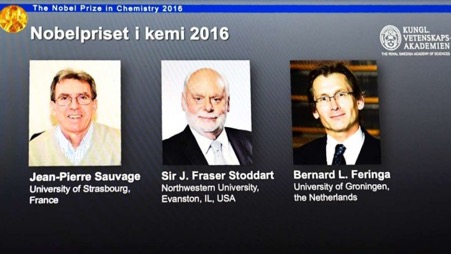
Three Nobel Winners in Chemistry Create World’s Smallest Machines
Three scientists, Dr. Sauvage, Dr. Stoddart, and DR. Feringa, who have been carrying out experiments geared towards developing nanomachines that are made up of moving molecules, won the Nobel Prize in Chemistry last Wednesday. The molecular machines are considered the world’s smallest mechanical devices and could be used to create a wide array of new products, such as energy storage systems and sensors.
When announcing the winners, the Royal Swedish Academy of Sciences stated that the current stage in molecular motor development is similar to the stage that the electric motor was before 1800 when scientists from different parts of the world would display spinning wheels and cranks not knowing that their invention would later power electric trains and other electric devices.
The three scientists will share the 8 million Swedish kronor prize equally. One of the main reasons they won this prize is that nanotechnology, which entails developing small structures using molecules, has attracted thousands of scientists and revealed a world that we never thought existed.
Speaking after the ceremony, James Tour, a professor at Rice University in Houston, stated that the award proved that the nanotechnology field is actually real and not just fictional science. He also predicted that this technology would be used in the future to make small machines that will have the capacity to deliver medications to internal organs in the body by just opening the cell membranes.
Other winners of the Nobel Prize this year are Yoshinori Ohsumi, a cell biologist who discovered how body cells recycle their content through a process called autophagy; David J. Thouless, J. Michael Kosterlitz, and F. Duncan M. Haldane won the Nobel Prize in Physics for their research on bizarre properties of matter in extreme states.